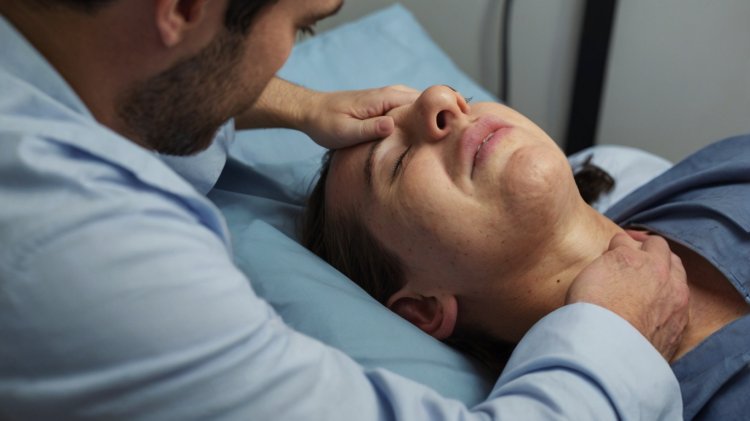Everything You Need to Know About Low Blood Pressure (Hypotension)
Discover the causes, symptoms, and treatments for low blood pressure. Learn how to manage hypotension and understand when it requires medical attention.

Everything You Need to Know About Low Blood Pressure (Hypotension)
Introduction
Low blood pressure, medically known as hypotension, can lead to symptoms like dizziness, fatigue, and even fainting. While having low blood pressure is often seen as healthier than high blood pressure, it can sometimes signal underlying health issues. Understanding the types, causes, symptoms, and treatments for hypotension can help you manage this condition effectively.
What Is Low Blood Pressure?
Blood pressure measures the force of blood pushing against your arteries. It consists of two numbers:
-
Systolic Pressure: The pressure when your heart beats and pumps blood.
-
Diastolic Pressure: The pressure during the resting phase between heartbeats.
Ideal vs. Low Blood Pressure
-
Normal Blood Pressure: Less than 120/80 mmHg
-
Low Blood Pressure: Less than 90/60 mmHg
While low blood pressure can be harmless, symptoms like fatigue and dizziness may indicate an underlying condition.
Types of Hypotension
1. Orthostatic Hypotension
This occurs when blood pressure drops upon standing up, causing dizziness or lightheadedness. It is common among older adults and individuals with autonomic nervous system disorders.
2. Postprandial Hypotension
This happens after eating, particularly in older adults. Blood flow to the digestive system can lower overall blood pressure.
3. Neurally Mediated Hypotension
This results from an abnormal interaction between the brain and heart, often triggered by prolonged standing or emotional stress.
4. Severe Hypotension (Shock)
Shock-induced hypotension occurs during severe conditions like infections, injuries, or allergic reactions. This form is life-threatening and requires immediate medical attention.
Causes of Low Blood Pressure
Common Triggers
-
Standing up quickly
-
Eating a large meal
-
Experiencing emotional shock or stress
Medical Conditions
-
Pregnancy: Increased demand for blood supply during pregnancy.
-
Heart Issues: Impaired circulation due to heart conditions.
-
Dehydration: Vomiting, diarrhea, or excessive sweating.
-
Endocrine Disorders: Diabetes and adrenal insufficiency.
-
Blood Loss: From injuries or internal bleeding.
Medications That Lower Blood Pressure
-
Beta-blockers
-
Diuretics
-
Tricyclic antidepressants
-
Erectile dysfunction drugs
If medications are a factor, consult your doctor about adjusting the dosage.
Symptoms of Low Blood Pressure
Not everyone with low blood pressure experiences symptoms. However, when symptoms occur, they may include:
-
Fatigue
-
Dizziness or lightheadedness
-
Fainting (syncope)
-
Nausea
-
Blurry vision
-
Cold, clammy skin
Severe cases can lead to shock, characterized by rapid breathing, irregular heartbeat, and confusion.
Diagnosing Hypotension
Tests and Procedures
-
Blood Pressure Monitoring: Multiple readings over time.
-
Tilt Table Test: Evaluates how blood pressure responds to changes in position.
-
Blood Tests: Check for anemia or hormonal imbalances.
-
Electrocardiogram (ECG): Detects heart-related issues.
Treatment for Low Blood Pressure
Treatment depends on the underlying cause and type of hypotension. Options may include:
Lifestyle Adjustments
-
Stay Hydrated: Drink plenty of water to prevent dehydration.
-
Avoid Sudden Movements: Stand up slowly to reduce dizziness.
-
Change Eating Habits: Eat smaller, more frequent meals to avoid postprandial hypotension.
-
Stay Active: Move around regularly to improve circulation.
Medical Treatments
-
Medication for Underlying Conditions: Treat issues like diabetes or heart disease.
-
Blood Pressure-Raising Medication: Prescribed for severe hypotension when necessary.
-
Emergency Treatment for Shock: Immediate fluids and medication to stabilize blood pressure.
Complications of Hypotension
-
Falls and Injuries: Sudden drops in blood pressure can cause fainting, leading to falls.
-
Organ Damage: Severe hypotension can deprive organs of oxygen, potentially causing long-term damage.
-
Shock: This life-threatening condition requires immediate medical attention.
Managing Hypotension
-
Identify Triggers: Keep track of situations that cause symptoms and plan accordingly.
-
Monitor Blood Pressure: Regularly check blood pressure at home.
-
Consult a Healthcare Provider: Discuss symptoms and potential treatments.
Conclusion
Low blood pressure isn’t always a cause for concern, but understanding its types, causes, and symptoms can help you manage it effectively. If hypotension is affecting your daily life, consult a healthcare provider for personalized treatment options.
FAQs
Q1. What is considered low blood pressure? A reading below 90/60 mmHg is generally considered low blood pressure.
Q2. Can dehydration cause low blood pressure? Yes, dehydration reduces blood volume, leading to lower blood pressure.
Q3. Is low blood pressure dangerous? It can be, especially if it leads to fainting, falls, or shock. Seek medical attention if symptoms persist.
Q4. How can I naturally increase my blood pressure? Stay hydrated, eat smaller meals, and avoid sudden movements.
Q5. Can medications for high blood pressure cause hypotension? Yes, some medications may lower blood pressure too much. Consult your doctor for adjustments.







